I love South Florida. I live in Iowa now (I’m a “salt-water Iowan”), but South Florida is my home: it’s where I was born and it’s where I feel most comfortable, and it’s where you will find most of the people I love. And I love the place. I love the texture: swamp, sand, hot pavement, waterlogged wood and cracked cement. I love how the light of the cities reflects off the clouds at night and gives everything an otherworldly glow. (Yes, I love “light pollution.”) I love living alert to the wild things that surround and can devour you: alligators, oceans, inky-black canals, expanses of sawgrass. Everything has teeth, spines, prickers and stickers, razor sharp beaks, tendrils that tangle, roots that rise up from the murk to knee your boat through its keel. You’ll lean on a tree and the bark will slough off to reveal a nest of thousands of 2-inch flying cockroaches — it makes you both tough and careful, but also appreciative.
I love the whole intercultural exchange point that much of Florida has become, how everyone’s from everywhere, and you can’t assume anything about anyone. Florida keeps you on your toes: you don’t do well to go rote through days, expecting them to be the same; you have to think if you want to get by; you have to be flexible; and I’m not talking “flexible like a palm tree in a storm,” I’m talking “flexible like a fish darting in and out of 12 kinds of coral escaping a net and 2 sets of the pointy jaws of death, nabbing a snack, enjoying the view, hanging out with your cousin, then really enjoying the view, and then accepting that you’ll never find out what was in that sack that got dropped from the side of a boat to the seafloor, even though, man you’d really like to know.” That kind of flexible.
Although the book is old and her name is now best known for the shooting that killed 17 people in the school that, two decades before, developers destroyed some of the natural landscape that she loved so they might build, Marjory Stoneman Douglas’s Everglades River of Grass is a beautiful book. Douglas had an excellent sense, long before most of us, for what human habitation should mean in South Florida. Because the majority of the “land” that you see outlined in maps showing South Florida is actually not land at all but a very wet ecosystem unique on the planet Earth that is best described as “a river wider than long, and shallow enough to wade through.”
Here’s an elevation map, showing Broward County (where I’m from) outlined in yellow. South of Broward, where the elevation on the map indicates 1-2 meters, is Dade County, where Miami sits. If you look closely at Broward, you’ll see a green outline around the far-East Atlantic-coast part of the County. That’s the part where people can live. The rest is everglades.
Along the East coast of Florida, inland from the barrier islands and beaches, there is a natural ridge of higher, dryer land. It is very narrow, and the site of the oldest cities, like Fort Lauderdale, which actually used to be a fort. It was named for a general from Tennessee who was shipped in because the soldiers wouldn’t kill the natives. Lauderdale came in like a one-man terrorist attack and made the men start killing. Every US city has its shameful history, this is just one of them. Lauderdale died on the boat back to Tennessee; they say they buried him on a beach, and no one knows where they left the body.
Here below is a screen grab of the google-maps version of the same area (I eyeballed it) of Broward County. Where the green rectangle sits above, you’ll see that’s where about two million people are living. Where 869 (the Sawgrass Expressway) bends south, that is the limits of the old earth-mound dike line, and if you imagine that line continuing south instead of jagging to the West, you’ll have an idea of where the Everglades used to be diked off in Broward County.
But as you see there are roads and cities West of that line. That land was brutally, forcefully dredged from the swamps: when you fly in from the West, look down and you will see square bodies of water, rock quarries where big machines pulled out the remains of fossilized coral reefs and crushed it into rubble that could be shaped into “new land.” The dig pits double as drainage lakes for the new developments. And this is destroying an ecosystem that is unique in the world. There is literally nowhere else like the everglades.
Developers kept getting farther and farther from the narrow ridge of dry land, closer to the Atlantic Ocean and closer to the Everglades. When they’d built all the way up to the ocean, they could only go UP: the beachfront buildings got taller. When the sprawl to the West reached the dike, they they did the dirty development disco-dance with politics that Florida has long been known for, and finally built right past it, right in Marjory Stoneman Douglas’s River of Grass. Road by road and plot by plot, people live there now. Kids have grown up there. It’s their home.
Look at this elevation map: this one is really pretty. Look at Lake Okeechobee: that’s the headwaters of the everglades: river of grass. You can see how the elevation falls on its South and Southeast rim — this is where the river starts. But the river is wide and so shallow that it’s full of sawgrass and dotted by cypress islands where clusters of trees have snagged enough silt to build up a mound of dry or almost-dry land. Look closely and by elevation alone you’ll see where the river bends: first it spreads out and down to the Southeast, then it curves to the Southwest — and almost the entirety of the Southwest “coast” of the state is basically one vast “river delta” held in place by the roots of mangrove forest.
Broward County is not the scene of Florida’s greatest environmental crimes. Once, the Miami River had rapids. They were dredged out to make way for shipping. Currently the human population is booming around Vero Beach, farther North on the East coast, and the pollution we’ve brought with our boom is poisoning the Indian River Lagoon. In just the past couple years thousands of manatees have starved to death in their home waters because human back-yard fertilizers are running off and causing algae blooms that darken the seafloor and prevent the seagrass manatees need to survive from growing.
Lake Okeechobee is also surrounded by dikes and sometimes its waters, toxic from sugar-cane growers’ production waste, gets released by the state into waterways, causing massive fish kills. And then there’s Southwest Florida, where decades ago con-men sold of parcels of swampland, dredging just enough of it to devastate the river of grass without really attracting the people or establishing the services that it would take to make a community grow. That is, until recently.
Southwest Florida has been growing like crazy.
I like this map because of the inset, which shows the relationship between South Florida and South Louisiana. Recently a whole community in Louisiana was relocated because their island was sinking. South Florida looks pretty similar on this map, but as far as people, there are millions more.
What this map makes clear, to me, is that dense human habitation should be limited to those areas that appear on the map in shades of green and navy. Yellow, orange, these areas could maybe support smaller populations. And where it’s red? Only live there if you live in a boat and plan to sail away when the storms come.
Needless to say, this is not a popular conclusion.
I love South Florida. It is my home, and my heart is still there, growing wild. It is a heart that loves thunderstorms and ocean waves and wild rides and grotesqueries. It is a heart that welcomes all the world to mingle and surprise one another on this slight bridge of land between the swamp and sea. I would rather gaze up into the clouds piled high above South Florida than any piddling mountain range. I would rather listen to the ocean roar than hear any song or creature singing. I would rather walk with the possums through the ethereal glow of “light pollution” than watch the stars move across the night sky.
But Florida is doomed. There is no bedrock or granite to build on: just limestone. Ancient coral reefs. When the oceans rise, they don’t just crash in from the shore, they bubble up from the ground.
And there is absolutely no wiggle room. Today it’s a hurricane, tomorrow houses will flood with the high tide.
I think people will always live in South Florida. It sings a Siren song in the true, mythological sense: tho it will rip you to shreds on the rocks and feast on your flesh, you will come to it willingly, because it’s just… so… beautiful… how could you resist?
But we should be clear on what’s happened here, and what’s happening now: a tiny strip of land between The Everglades and The Atlantic Ocean which has never been a suitable place for a massive metropolis, has, in fact, become a massive metropolis by learning to scrape “new dry land” from the bed of a wide, slow river moving forever down, down into the sea.
Do you know the story of London Bridge? It was a bridge that people lived and worked on. There were shops and houses and apartments hovering on a strip across the Thames, and there were benefits to living there — like how water access and waste disposal made living there particularly clean.
But London Bridge was unsustainable. It was a jumble of buildings on an always-aging bridge. Eventually it blocked the flow of the river and made it difficult for boats to pass. London Bridge was magical, magnificent, a Wonder of the Medieval World, but it could not last.
This is how I think of Florida: magical, magnficent, a wonder, and now, just plain unsustainable. Just as human activity changed the river Thames, human activity has changed the oceans, the everglades, and the climate. But instead of the equivalent of a few city blocks, this is going to affect millions of people.
I expect it will take a long time. Decades. But it is inevitable.

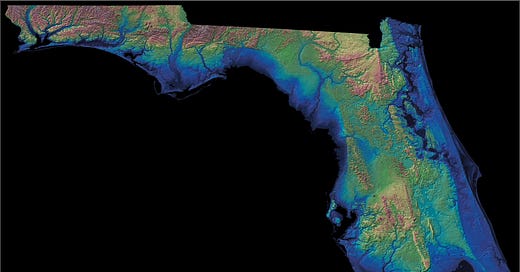




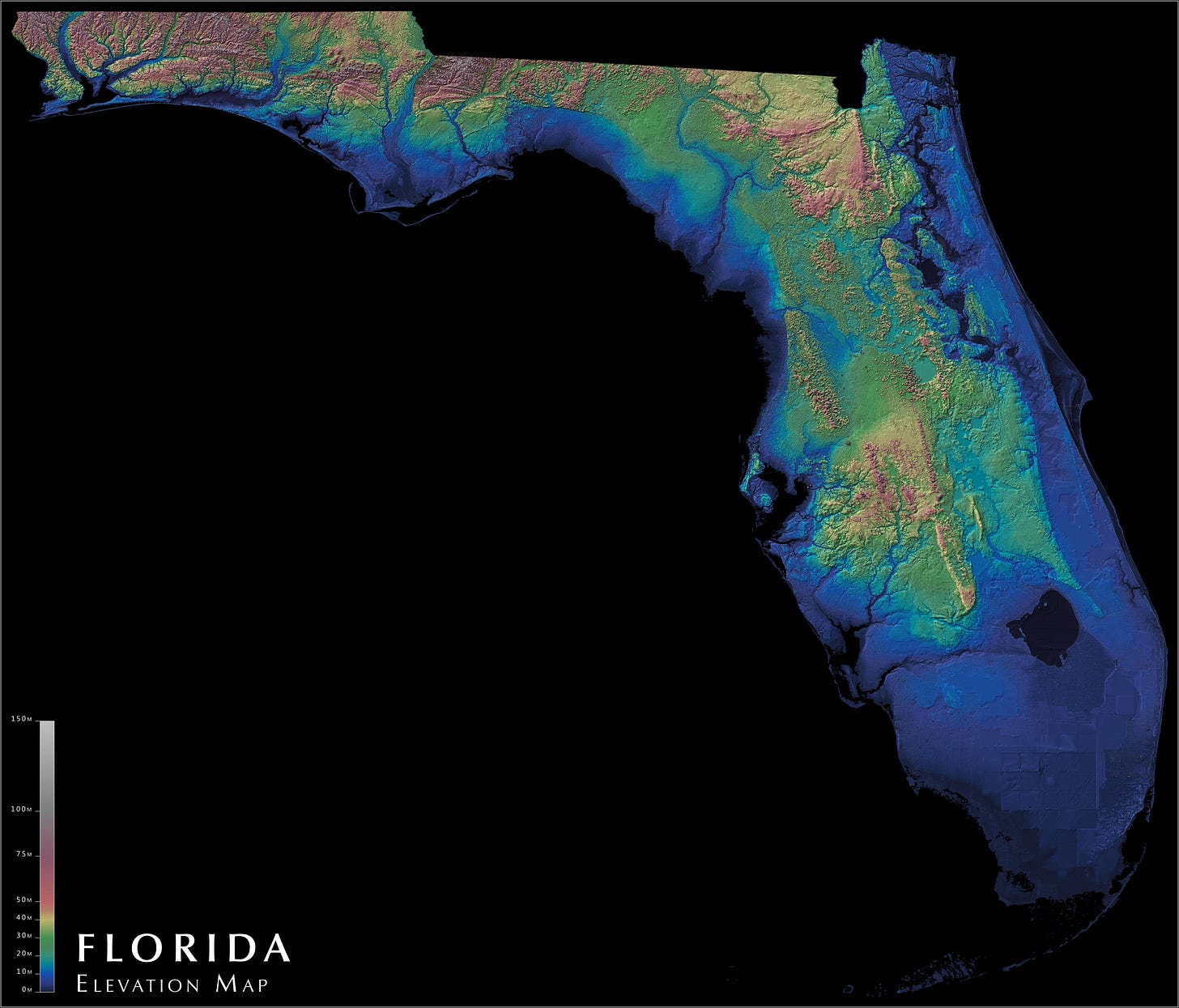
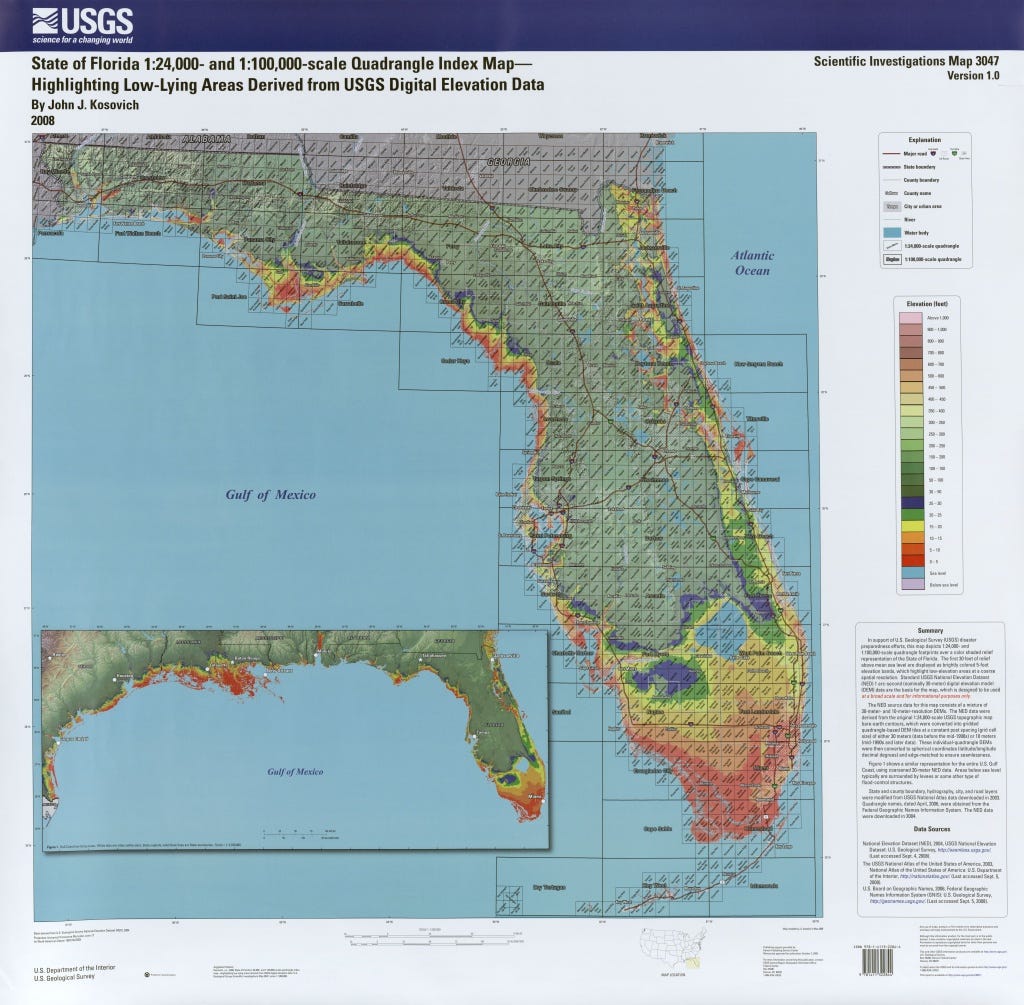
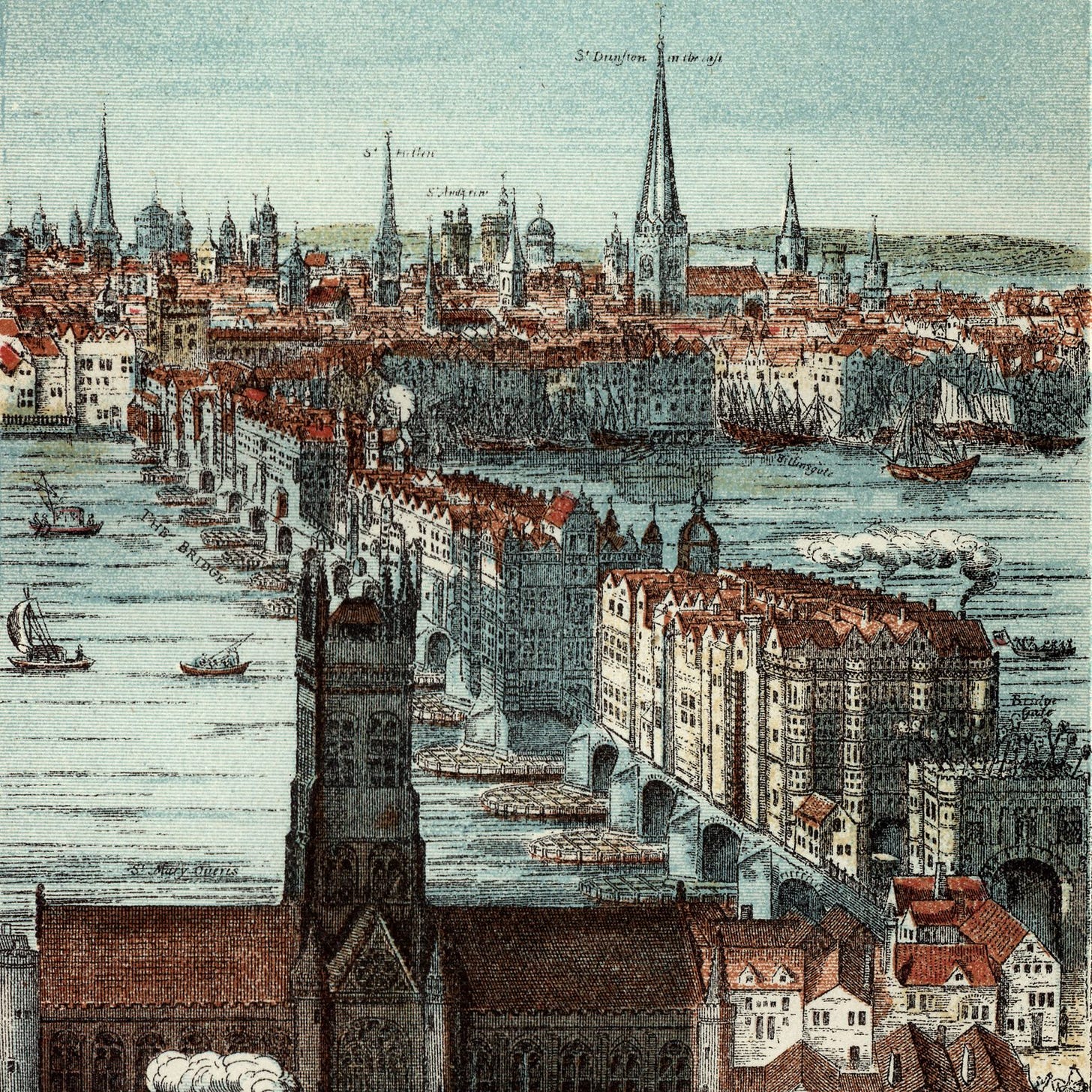
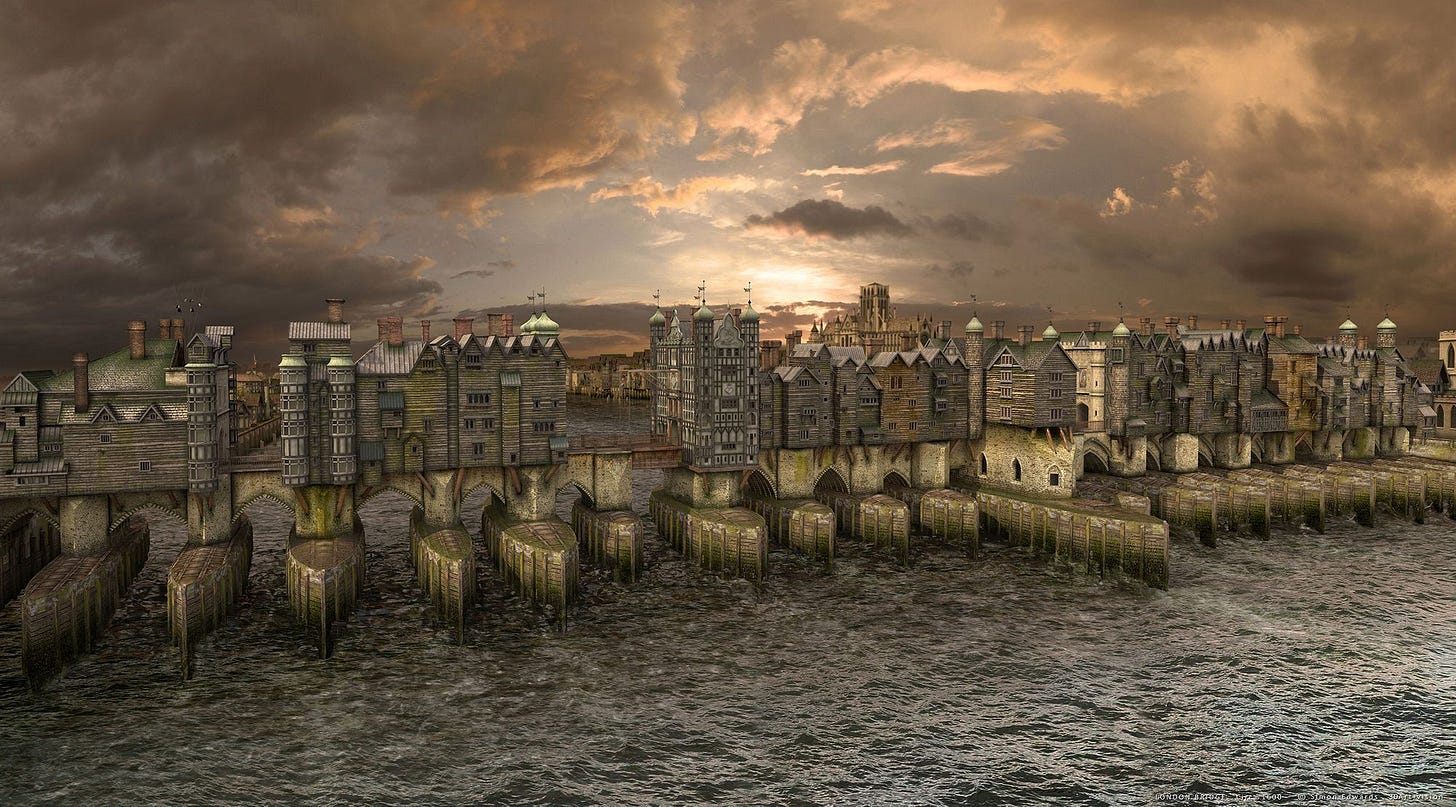
Oh, Amy! It has been a tough couple weeks and even though this broke my heart to read, I really needed it. Thank you. I had to stop several times to wipe away tears so I could keep reading. Adding this to my list of favorite Florida essays. (It's a very short list, and you're in very good company.)
So that's where "London Bridge is falling down" (the nursery rhyme) came from!
You write so beautifully. This piece is stunning in its prose and its conviction.